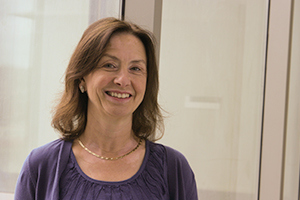Genetic Modification of HHT Phenotype

Rosemary Akhurst, PhD from the University of California, San Francisco Helen Diller Family Comprehensive Center has been awarded a $50,000 grant from Cure HHT for her research entitled “Genetic modification of the HHT phenotype”.
Dr. Akhurst’s Cure HHT seed grant has been leveraged to $1.8MM through NIH / NHLBI
Proposed Research Study
This study will open up a whole new area of investigation and it addresses a fundamental question in HHT, what gene(s) act in concert with endoglin and ALK1 to predispose certain patients to the development of PAVMs? This modifiable gene, in stark contrast to the original two genes (which are receptor genes and difficult to target for the formulation of therapeutic agents), may give us an easier pathway for treatment. It is the first study to be funded that partners basic laboratory research with clinical research. This study will be conducted in collaboration with HHT Centers in France and The Netherlands.
Research Study Update
This study, into basic molecular mechanisms of HHT disease, undertook a screen for genes other than the causative gene that influence the clinical outcome of inheriting HHT. Dr. Akhurst made three findings: i) genetic variation in the wild type allele of ENG, inherited form the unaffected parent, can influence the incidence of pulmonary arteriovenious malformation (PAVM); ii) inheritance of variants of a new gene, PTPN14 on human chromosome 1, influences the appearance of PAVMs in HHT1 and HHT2. This gene is implicated in a novel signaling pathway (termed Hippo-Yap-Taz) that is triggered by mechanical stimuli such as vessel stress, stretch or tension; iii) inheritance of variants of ADAM17 on human 2p25 influence the appearance of PAVM in HHT1 but not HHT2. This protein regulates signaling from the TGFb type I receptor, and interacts with TGFb signaling to regulate release of cells from the bone marrow that are involved in vascular repair processes. ADAM17 involvement also implicates inflammation in HHT.
These findings tell us more about molecular pathways downstream of endoglin and alk1 that may be used as future drug targets and novel strategies for HHT treatment.
According to Dr. Akhurst, “This is a basic study in molecular mechanism. We have identified a gene that differs between individuals and, depending on which form of the gene is inherited, this influences the risk for PAVM in HHT patients. We have also shown that this gene connects into the ACVRL1 and EphrinB2 Pathways. This tells us more about molecular pathways downstream of ACVRL1, which is essential for future drug development or drug strategies (for HHT and for angiogenesis in general). “
The complete results of the Dr. Akhurst’s research can be read in Nature.
Dr. Christopher Hughes was a collaborator on this publication since his work, also funded by Cure HHT, was sited in Dr. Akhurst’s findings.
